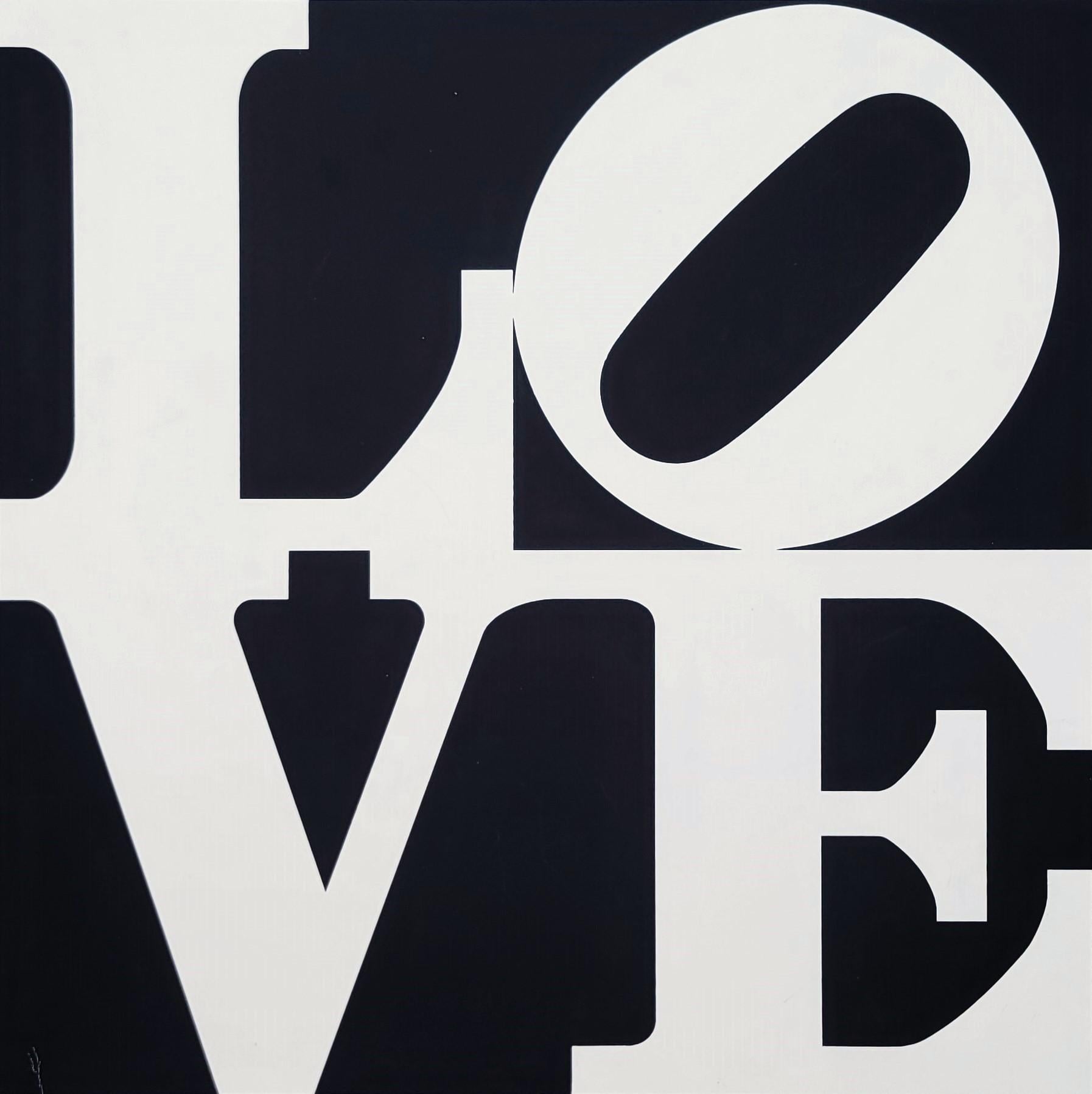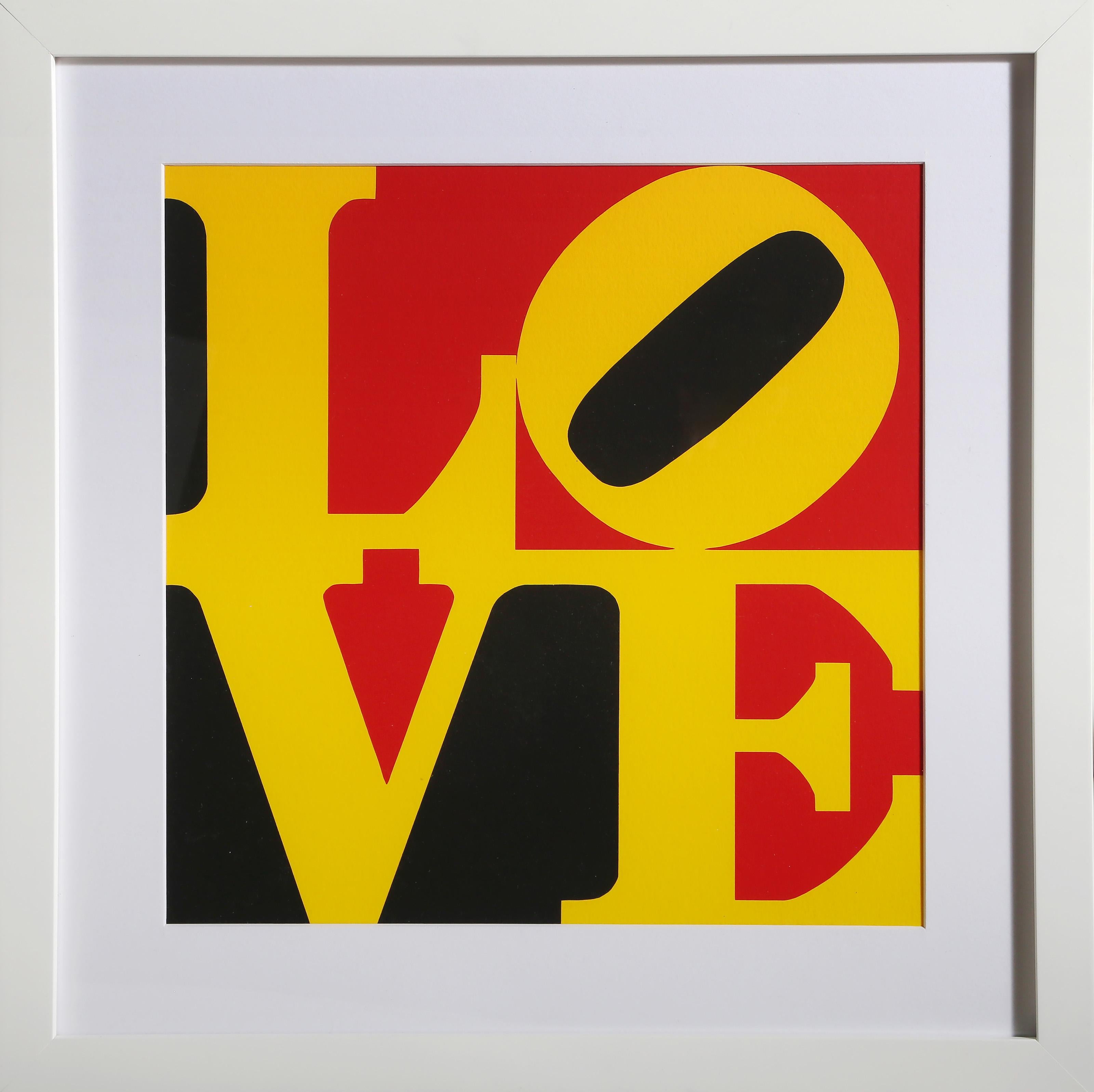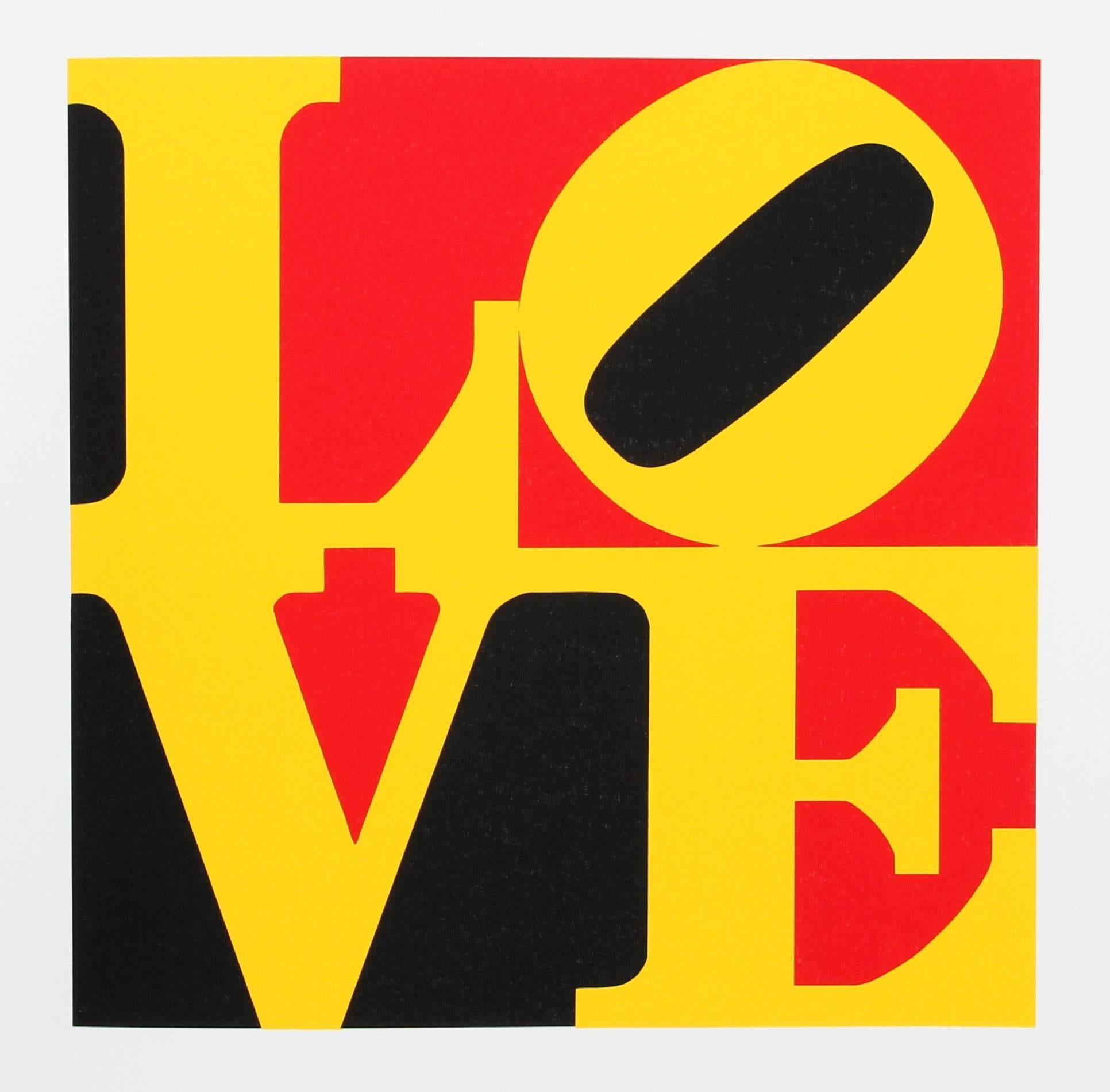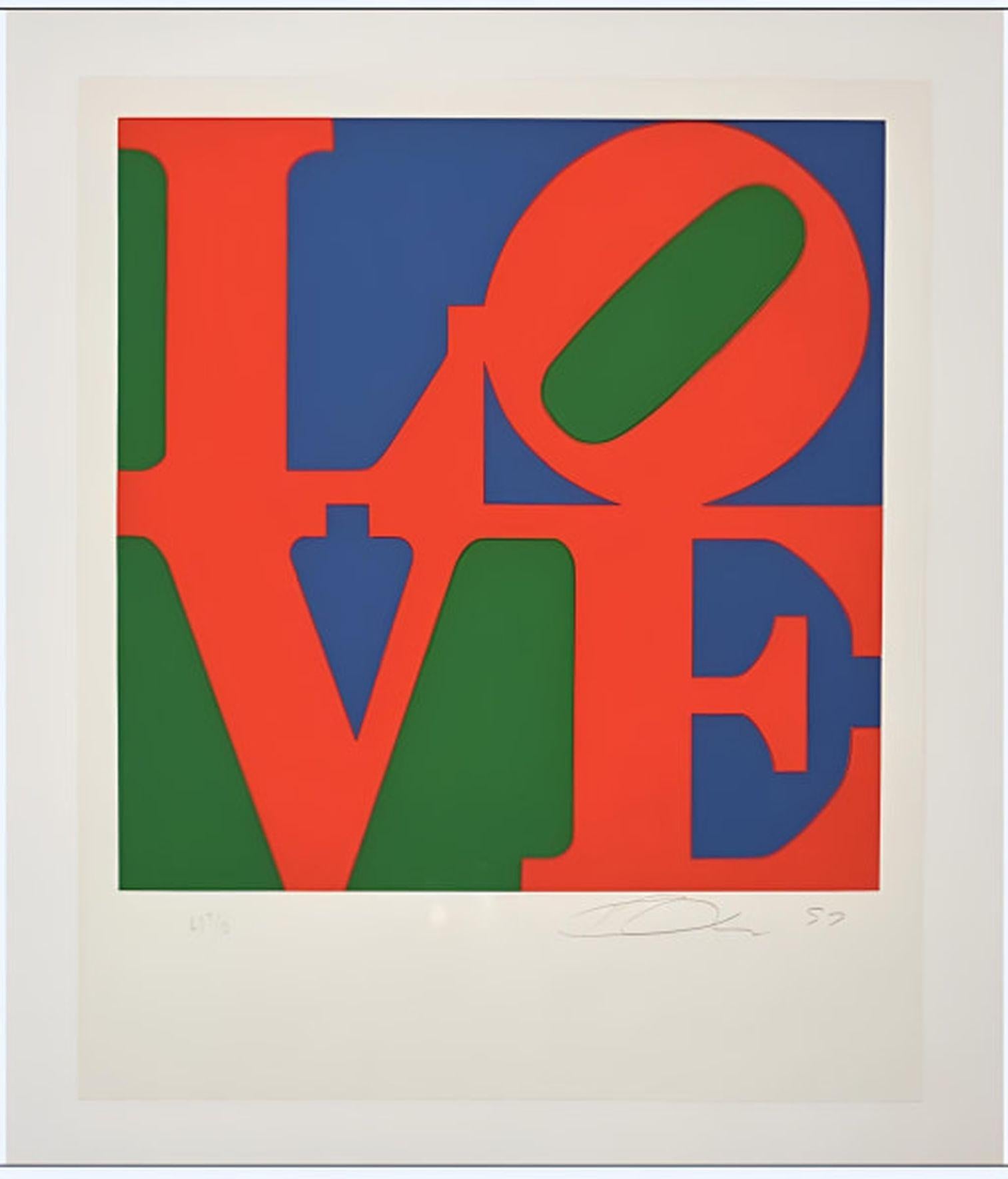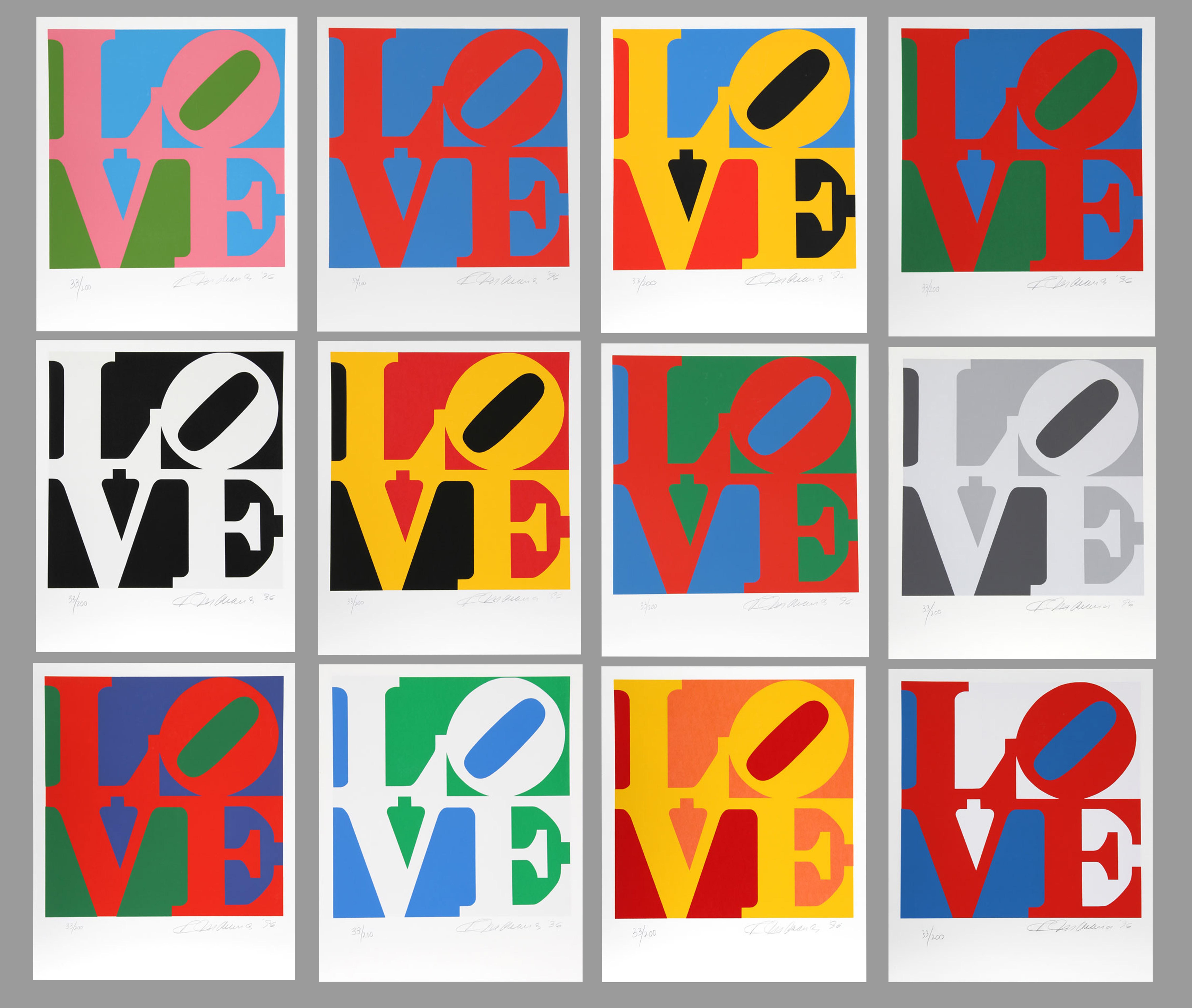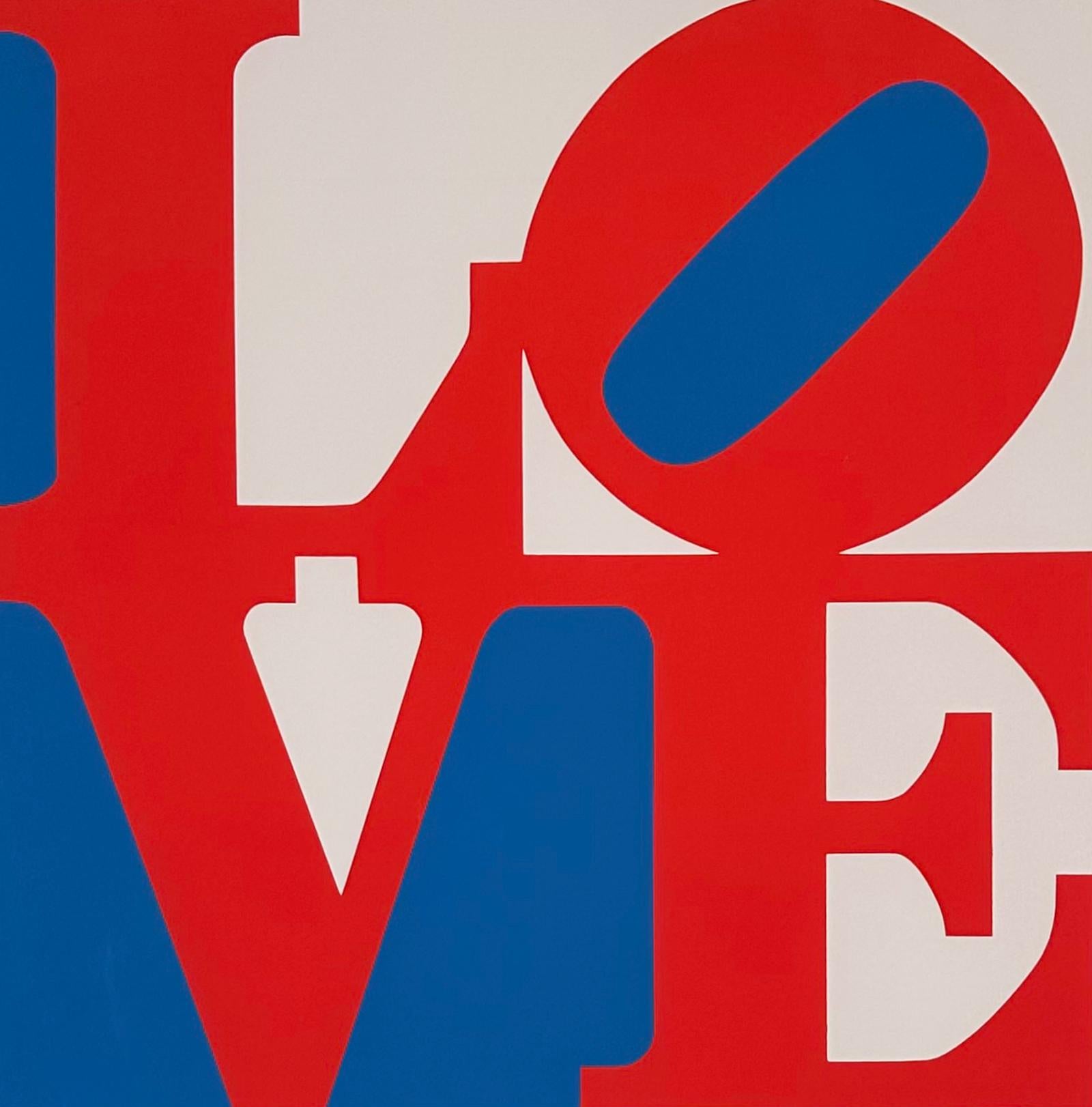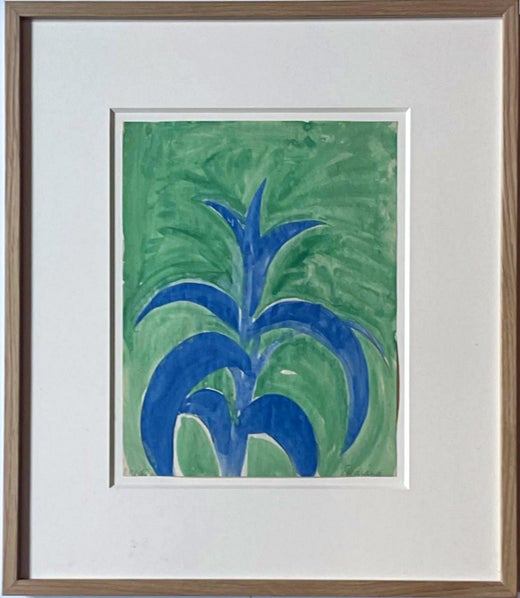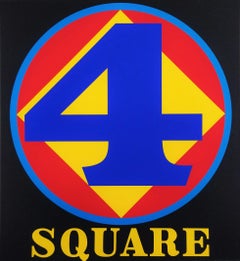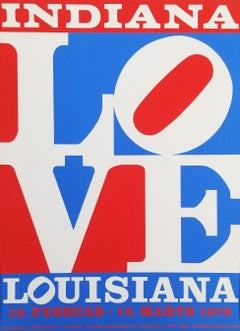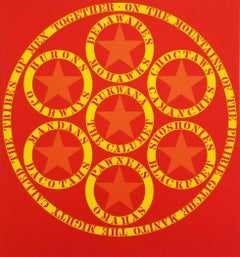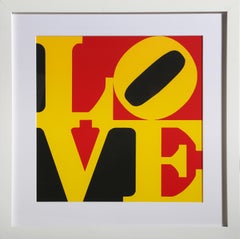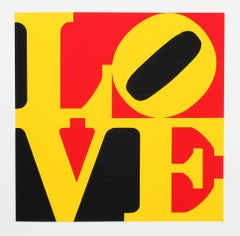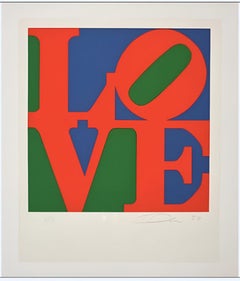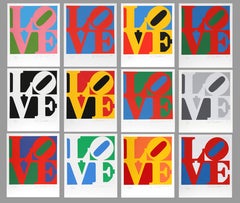Artist: Robert Indiana (American, 1928-2018)
Title: "LOVE (Plate 4)"
Portfolio: Book of Love
*Signed and dated by Indiana in pencil lower right
Year: 1996
Medium: Original Screenprint on A.N.W. Crestwood Museum Edition paper
Limited edition: 75/200, (there were also 50 impressions in roman numerals)
Printer: Freeman Burks of American Image Editions, New York, NY
Publisher: Michael McKenzie of American Image Editions, New York, NY
Framing: Framed in a contemporary silver moulding and silver filet with white cotton rag matting
Framed size: 32.13" x 30.63"
Sheet size: 24" x 20"
Image size: 18.19" x 18"
Condition: Minor cosmetic wear to frame. In excellent condition
Notes:
Provenance: private collection - Cincinnati, OH. Numbered by Indiana in pencil lower left. Comes from Indiana's 1996 "Book of Love" portfolio of twelve screenprints of the same image in various colors, originally issued in a black-lettered brown paper-covered folio with accompanying twelve poems. Besides the Arabic and Roman numeral editions, there were also 15 artist's proofs. Technical Director: Peter Engert; Plate Maker: James Harvey; Counsel: Gregory S. Smith, Esq.; Fabricator: Al Hirshson; and Die Maker: York Display. Printed in three colors: white, gray, and dark gray.
The "Book of Love" project was conceived by the artist as a portfolio that would make a definitive statement on his masterpiece "LOVE", fulfilling his original vision as both a poet and a painter. The prints in the portfolio were created by Indiana as illustrations for his own love poems, written circa 1958-1973. The prints were produced in silkscreen using oil based paints on a newly created fine art paper that he found perfect for rendering "LOVE", which demands a precise line and radiant true color. The poems each have a highly raised embossment of "LOVE", trapped in colors, just below the title. Each print is hand pencil signed, and each poem hand pencil initialed by the artist.
Biography:
Robert Indiana was born on September 13, 1928 named Robert Clark in New Castle, Indiana, and was adopted as an infant by Earl Clark and Carmen Watters. After his parents divorced, he relocated to Indianapolis to live with his father so he could attend Arsenal Technical High School (1942–1946), from which he graduated as valedictorian of his class. After serving for three years in the United States Army Air Forces, Indiana studied at the Art Institute of Chicago (1949–1953), the Skowhegan School of Painting and Sculpture in Maine (summer 1953) and Edinburgh University and Edinburgh College of Art (1953–1954). He returned to the United States in 1954 and settled in New York City. In New York, Indiana's lover Ellsworth Kelly, whom he met in 1956, helped him find a loft on Coenties Slip. On Coenties Slip he met neighboring artists like Jack Youngerman, Agnes Martin and Cy Twombly, with whom he shared his studio for a time. Indiana's career took off in the early 1960s after Alfred H. Barr, Jr., bought The American Dream, 1 for the Museum of Modern Art.
In 1964, Indiana moved from Coenties Slip to a five-story building at Spring Street and the Bowery. In 1969, he began renting the upstairs of the mansarded Victorian-style Odd Fellows Hall named "The Star of Hope" in the island town of Vinalhaven, Maine, as a seasonal studio from the photographer Eliot Elisofon. Half a century earlier, Marsden Hartley had made his escape to the same island. When Elisofon died in 1973, Indiana bought the lodge for $10,000 from his estate. He moved in full-time when he lost his lease on the Bowery in 1978. Indiana grew reclusive in his final years. He died on May 19, 2018, at his home in Vinalhaven, Maine, of respiratory failure at the age of 89. One day before his death, a lawsuit was filed over claims that his caretaker had isolated him from family and friends, and was marketing unauthorized reproductions of his works.
